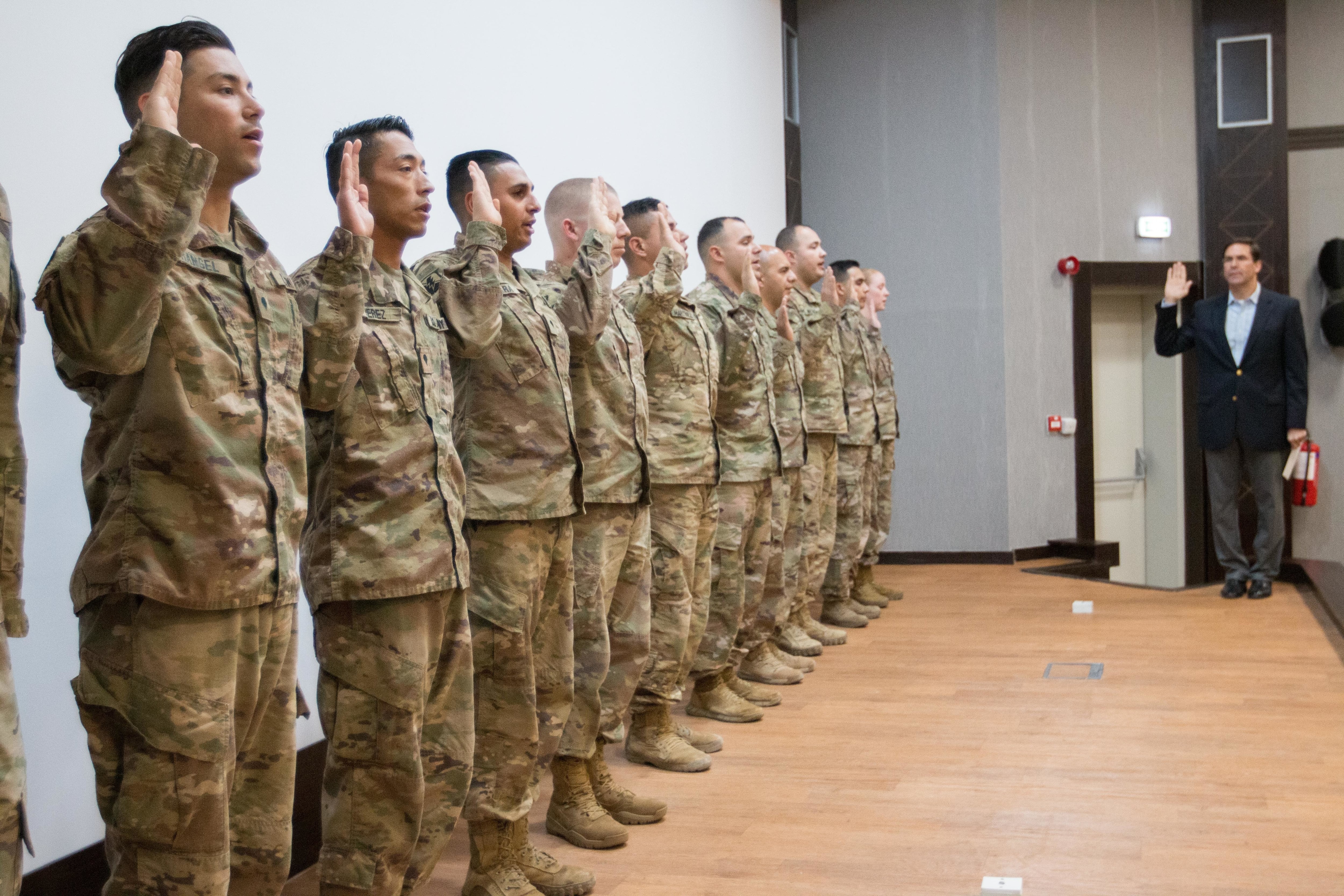The top commander of the Army Reserve had a subtle but distinct message about what it takes to put his forces into major combat operations and what that means for the total force of the Army.
“We don’t fight tonight,” Lt. Gen. Charles Luckey told attendees at Tuesday’s Association of the U.S. Army speaker event. “It’s fight tonight after tomorrow night.”
“The 82nd and Rangers, they’ll fight tonight, we’ll fight two days after they do,” he said.
RELATED

The comment elicited chuckles from the mostly gray-haired crowd of retired Army officers, many of them who carried stars on their shoulders. But that distinction illustrated the combined pressures the reserve force faces in an “existential war with a peer competitor,” as Luckey framed it.
And serious questions have arisen at top Army offices as to whether the current makeup of the active and Reserve sides of the Army creates “strategic risk” in that near-peer fight.
The three-star presented a snapshot of his force, showing that within the first 90 days of a major conflict, half of the Army Reserve will deploy either in the United States or in theater.
The limited map for public display showed the movement of Army Reserve and Guard entities across the United States to major bases and ports to flow to the fight.
“This is four times more stressful, in terms of bulk, of anything the Army’s ever done in terms of stuff and people who have to move very quickly for any major event,” Luckey said. “And essentially this is from a cold start.”
Cold start is how a Reserve activation force wide would go now unless top Pentagon planners decide how, when and where to mobilize critical Reserve enablers to support active Army operations in major combat.
But drilling down to specific capabilities and units makes the picture even more stark.
On a long list of “unique” assets in the Reserves such as chemical, biological, radiological and nuclear response units, seaport operations, military police battalions that specialize in interrogation and transloading craft, nearly three quarters of those and other types of units are only in the Reserves and have no active Army counterpart or complement.
The “stressed” assets include Army space support, corps aerial delivery and vertical construction, and those are needed to set the stage in theater for the active units arriving and fighting.
Then there’s the combined stressed and unique assets. While some units exist only in the reserves, they must be deployed in the first days of battle commencing.
If the day of mobilization of the reserves is the same day as the start of armed conflict, a huge portion of what the Army Reserve can provide becomes a strategic risk if not addressed, Luckey said.
Another slide the three-star shared laid out timelines showing that of the critical units and personnel in key capabilities, delays to mobilization could run anywhere from two weeks to more than two months.
That broke down into administrative, training, equipment maintenance and preparation and getting the soldiers to their destination.
“This drives a strategic conversation as to whether or not you believe mobilizing the (Guard) and (Reserve) is especially provocative act that is likely to set in motion other cascading events or other trigger points used from this calculation and increase the likelihood of combat operations ensuing,” he said.
“Or, whether you look at it as a flexible deterrent option. One of the ways you telegraph to a conventional opponent you’re getting serious is because you’ve got to mobilize certain capabilities prior to the initiation of combat operations,” Luckey said.
And a big signal is putting the Reserve mobilization into motion.
“ … One of our responsibilities is to set the theater for the warfighter with critical embedded enablers and unlike the (Guard), which adds massive combat capability to the Army from a combat perspective, many of the things on this slide reside only in the (Reserve) and are critical key enablers and have got to go fast, in some cases three days,” he said.
Which brings the strategic question, which resides at the center of how to use the reserves and, more importantly, what that means for the rest of the Army.
All of that leads to what Luckey described as an “interesting set of conversations inside the Army.”
“Can we start a mobilization process prior to the beginning of hostilities?” he said.
It remains an open question.
But what he and the Army G4 and Army Materiel Command leadership are looking closely at is the same focus.
“If we can’t get some time to get ahead of some of these things then we need to look to rebalance the force structure of the Army,” Luckey said. “Because some of the things that are in the (Reserve) probably shouldn’t be in the (Reserve) if I don’t have time to generate that capability prior to an engagement.”
Todd South has written about crime, courts, government and the military for multiple publications since 2004 and was named a 2014 Pulitzer finalist for a co-written project on witness intimidation. Todd is a Marine veteran of the Iraq War.



